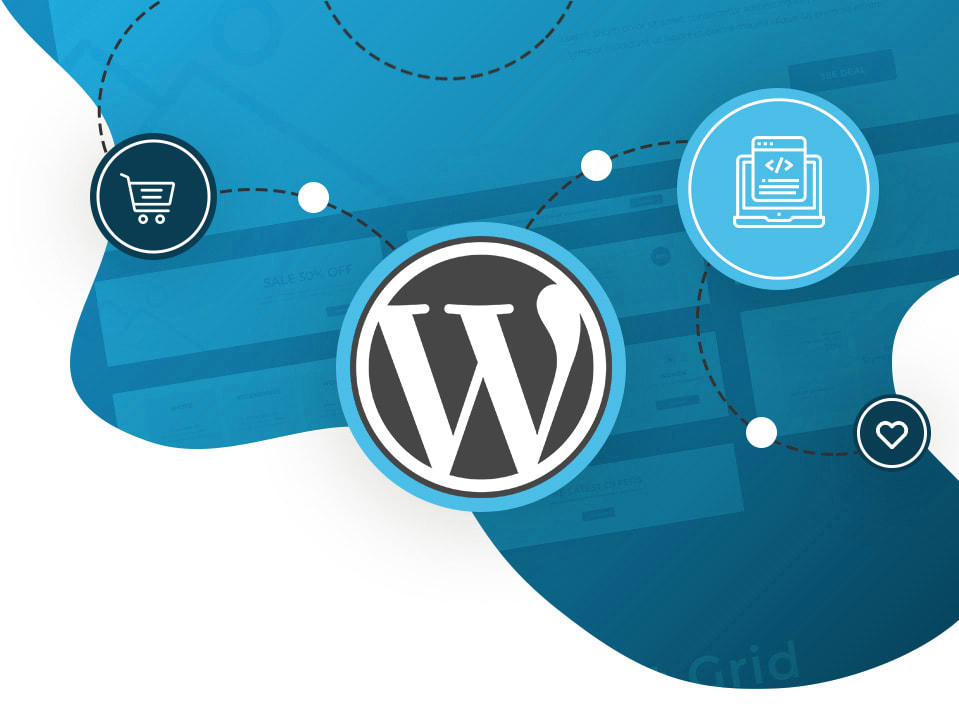In the digital age, gathering feedback and insights from your audience is more important than ever. Online surveys offer a powerful tool to collect this information, allowing you to understand customer preferences, improve products or services, and enhance overall customer satisfaction. However, creating effective surveys requires careful planning and execution to ensure you collect meaningful and actionable feedback.
In this article, we will unveil a step-by-step roadmap to building powerful surveys. We’ll explore how you can ditch the dead-end questions and design surveys that not only hook your audience but also deliver actionable feedback you can use to make real change. Let’s dive into the world of online surveys and discover how you can master the art of collecting actionable feedback.
1. Choosing the Right Survey Tool
Creating a successful online survey starts with selecting the right customer feedback tool. Not all survey platforms are created equal, and the one you choose can significantly impact the information you gather. Consider the following factors when choosing a survey platform:
- User-friendly interface and professional support
- Customization options for branding and advanced logic
- Data integration capabilities for comprehensive analysis
- Pricing considerations, especially for frequent use
You can choose between a free online survey tool and a paid one based on their functionality and your requirements. While your basic requirement can be met by free survey software, advanced capabilities, and customization options might be absent.
2. Crafting Effective Survey Questions
With your survey tool chosen, you can now focus on developing the crucial questions. The secret to crafting effective survey questions lies in their clarity, conciseness, and ability to capture valuable insights. Customizing your survey with questions that pertain to specific situations or behaviors can provide actionable data that can better align with your research objectives of enhancing customer experience.
Question Types and Formats: Selecting the right types and formats of questions is critical to garnering the required data effectively. For instance, multiple-choice questions, where respondents select one or more options from a predefined list, are suitable for obtaining quantifiable insights.
But what if you want to measure respondents’ attitudes or levels of agreement with statements? Then, scale-based questions like Likert scales and Net Promoter Score can be your best friends, giving you nuanced feedback.
Avoiding Common Pitfalls: While the type and format of your questions play a crucial role in effective data collection, sidestepping common pitfalls in question design holds equal importance. In your survey, make sure that you:
- Avoid leading questions that suggest a specific answer or contain biased language.
- Use clear and specific language, avoiding jargon or abbreviations that may not be universally understood.
- Pre-test your surveys with colleagues to identify and correct ambiguous questions or phrasing.
- Ensure questions are neutral and do not imply a correct response or favor a particular answer.
- Be mindful of question length and complexity, keeping them concise and straightforward for easy comprehension.
3. Designing Visually Appealing Surveys
Believe it or not, the visual design of a survey can significantly increase response rates and positively influence brand perception. Not only is it important to make your survey aesthetically pleasing, but optimizing surveys for mobile devices is also crucial as a large portion of responses come from mobile users.
Let us look at how you can create surveys that are visually appealing and mobile-friendly.
a. Customization and Branding: Customization plays a crucial role in survey design, allowing you to tailor your surveys to reflect your brand’s identity. Free survey creator tools offer a range of customization options, including themes, fonts, and colors. Similarly, paid survey tools offer extensive customization options to align with your branding. These include CSS themes, custom survey templates, images, logos, and question libraries. This level of customization allows you to create surveys that are not only visually appealing but also consistent with your brand’s identity.
b. Mobile-Friendly Design: In the age of smartphones, it’s essential to optimize your survey for mobile devices. A mobile-friendly design enhances user experience, supports smooth completion, and enables survey creation and analysis directly from mobile devices. With responsive design, creating surveys becomes a breeze, as you can create or take them on any device, offering the ability to complete or manage surveys anywhere and anytime. Whether it’s during a commute, in a waiting room, or during a break, a mobile-friendly survey ensures that your respondents can provide their customer feedback whenever it’s most convenient for them.
4. Leveraging Survey Logic & Branching
With a visually appealing survey filled with well-crafted questions, the flow of those questions is crucial. This is where survey logic comes into play. Survey logic, also known as skip or branch logic, allows you to:
- Direct respondents to different parts of the survey based on their previous answers
- Ensure that respondents only see questions that are relevant to them
- Enhance their personalized experience
- Tailor follow-up questions based on respondents’ previous answers
- Implement complex survey paths to accommodate various respondent scenarios
Benefits of Survey Logic: In the survey-building process, you can’t overlook applying survey logic as it enhances survey response rates. It also ensures that the survey responses gathered are more meaningful and actionable data, ensuring that the survey responses gathered are directly applicable to each respondent.
Here are some benefits of survey logic for which you should implement them in your customer feedback surveys:
- Survey logic reduces respondent fatigue by presenting only applicable questions, thus lessening the total survey completion time.
- By tailoring the survey flow based on respondents’ previous answers, survey logic ensures a smoother and more user-friendly experience.
- By eliminating confusion from unnecessary queries, survey logic helps increase respondent engagement.
Distributing Your Survey: With your survey perfectly crafted, it’s now time for distribution. There are various methods for survey distribution, including email, social media, and website integration. Each method has its strengths and can help you reach a wider audience.
Let us look at the most popular ways through which you can distribute your online surveys:
- Email: A widely used method for survey distribution, email allows for personalized invitations and can reach a large audience. It also provides a direct link to the survey, making it easy for respondents to access
Some advantages of email survey distribution include:
- Personalization: Tailoring email content to individual recipients can increase response rates.
- Cost-effective: Sending surveys via email is often more affordable than other distribution methods.
- Trackable: Email platforms offer tracking features that allow you to monitor open rates and click-through rates, providing valuable insights into respondent behavior.
- Website: Embedding surveys directly into your website provides a seamless user experience for visitors. It allows respondents to participate without leaving your site, increasing the likelihood of completion.
Here are some advantages of website surveys as your distribution channel.
- Accessibility: Surveys integrated into websites are easily accessible to visitors, encouraging participation.
- Brand Consistency: Embedding surveys ensure that they align with your website’s design and branding, maintaining a cohesive look and feel.
- Real-time Feedback: Website integration allows you to gather feedback from visitors in real time, enabling you to make timely improvements or adjustments.
- SMS: Text message surveys offer a direct and immediate way to reach respondents, particularly those who prefer mobile communication. They are brief and can quickly capture feedback on the go.
Here’s why you must consider SMS as your medium to share surveys with your target audience.
- High Open Rates: SMS messages are often read within minutes of receipt, ensuring your survey gets noticed.
- Quick Response Times: Due to their simplicity and convenience, SMS surveys can elicit rapid responses.
- Reach: SMS surveys can reach a wide audience, including those who may not have access to email or the Internet.
- Mobile Apps: Integrating surveys into mobile apps can provide a seamless user experience for app users. It allows for targeted surveys based on user behavior within the app.
Mobile app survey integration has many benefits including:
- User Engagement: Surveys integrated into mobile apps can engage users while they are already active within the app, increasing participation.
- Contextual Insights: Mobile app surveys can provide insights into user behavior within the app, allowing for targeted improvements or updates.
- Social Media: Social media platforms provide a dynamic channel for distributing surveys. Utilizing visually appealing graphics, relevant hashtags, and incentives can enhance survey exposure and engagement. Paid advertising options enable targeted outreach to a broader audience.
Here are some reasons why you should leverage social media to share your customer feedback surveys:
- Wide Reach: Social media platforms boast large user bases, allowing for broad survey dissemination.
- Viral Potential: Surveys on social media can be easily shared, potentially increasing their reach exponentially.
- Targeted Advertising: Paid advertising options on social media enable precise targeting based on demographics or interests, improving response rates.
Analyzing & Acting on Survey Results
Having distributed your survey and started receiving responses, the next step is to perform data analysis. However, analyzing survey results isn’t just about reading through the responses. You need to revisit the research questions your survey aimed to answer. This provides a roadmap for your analysis, ensuring you prioritize the most relevant information.
- Perform Data Visualization: Data visualization is a crucial step in analyzing survey results as it helps in making complex data more understandable and insightful. Through graphs, charts, and other visual representations, you can easily identify trends, patterns, and outliers in your data. This visual interpretation can lead to more informed decision-making and effective communication of your findings to stakeholders.
You can use data visualization tools to spot trends and patterns, simplifying the complexity, and aiding in better decision-making. Some data visualization tools offer the following features:
- Real-time data handling for instant visual updates
- Predictive analytics features to forecast future trends from survey results
- Natural Language Processing capabilities to analyze qualitative natural language data from surveys
- Sentiment analysis to understand the emotions and opinions expressed in the data
- Distinguish Between Qualitative vs. Quantitative Data: Qualitative data consists of non-numerical information that helps understand motivations, opinions, and attitudes. Open-ended questions with textual responses yield qualitative data, requiring thematic analysis to identify patterns and recurring ideas.
Quantitative data, on the other hand, consists of numerical information that can be quantified and statistically analyzed. Closed-ended questions providing numerical responses (e.g., multiple choice) offer quantitative data, easily analyzed using statistical methods.
Identifying and distinguishing between qualitative and quantitative data is important in the data analysis process as it:
- Helps Choose Appropriate Analysis Methods: Each type requires different analysis techniques.
- Provides Deeper Insights: Qualitative data can reveal underlying motivations and attitudes.
- Aids in Effective Decision Making: Quantitative data offers statistical confidence for decisions.
- Enhances Data Interpretation: Knowing the type helps in understanding the context of the findings.
- Identifying Trends and Patterns: Identifying trends and patterns in your survey results can reveal relationships between variables and even predict future trends. Statistical tools such as T-tests and regression can help identify statistically significant results and relationships between survey data points. Cross-tabulation is another useful method that arranges data into rows and columns, revealing relationships between different variables and easing data comprehension.
Benchmarking results from repeated market research surveys can highlight patterns and processes, assisting in predicting future trends and outcomes. By understanding these trends and patterns, you can make informed decisions based on your survey data.
Conclusion
Honing the art of creating online surveys is crucial for collecting actionable feedback and valuable insights from your audience. From choosing the right survey maker to crafting effective questions, designing visually appealing surveys, and leveraging survey logic, each aspect plays a vital role in creating surveys that work for you.
Creating an effective online survey may seem challenging, but with the right survey tools, a clear plan, and a dash of creativity, you can easily craft a survey that not only engages your audience but also provides invaluable insights. This knowledge can then be used to inform data-driven decisions, improve customer satisfaction, and ultimately propel your business toward continued growth and success.
Author Bio:
Kaumudi Tiwari is the Digital Marketing Lead at Zonka Feedback and an experienced content writer and digital strategist, who has been in the IT industry for the last 5+ years. Passionate about writing customer experience, customer satisfaction, customer feedback, and Net Promoter Score.













Leave a Reply